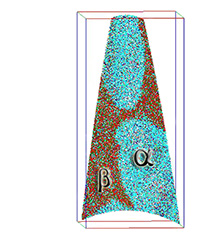An improved titanium alloy—stronger than any commercial titanium alloy currently on the market—gets its strength from the novel way atoms are arranged to form a special nanostructure. For the first time, researchers have been able to see this alignment and then manipulate it to make the strongest titanium alloy ever developed, and with a lower cost process to boot.
|
ADVERTISEMENT |
They note in a paper published in April 2016 by Nature Communications that the material is an excellent candidate for producing lighter vehicle parts, and that this newfound understanding may lead to the creation of other high-strength alloys.
|
|
…

Add new comment